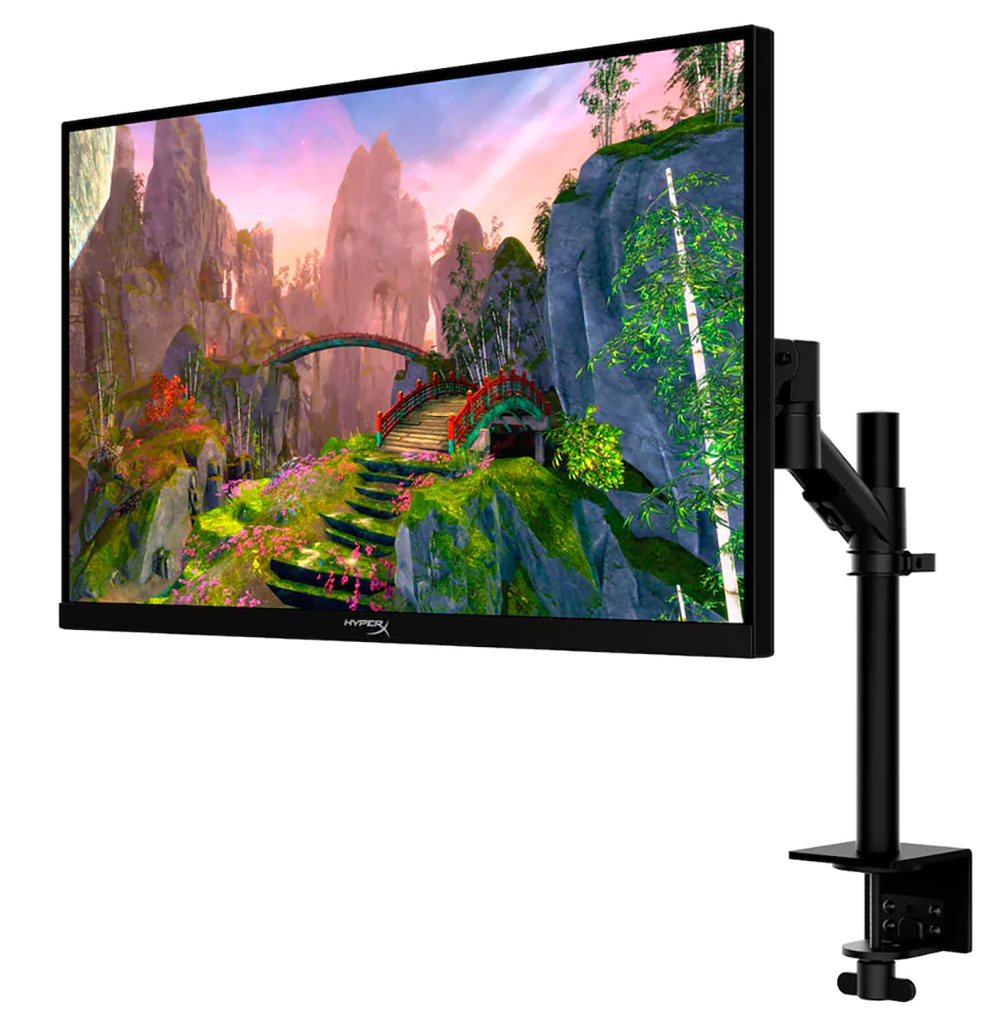Why you can trust Tom's Hardware
When exploring the extremes of gaming monitor performance, there is always a compromise. High resolution means a lower frame rate. High frame rates mean lower resolution. High frame rates and high resolution mean a higher price. The QHD/165 Hz category is still the balance point where you can get sharp imagery and excellent motion resolution for a reasonable sum. The deciding factor then becomes video processing quality, and, in that area, the HyperX Armada 27 excels.
It has one of the best overdrive implementations I’ve seen with a high degree of blur reduction and no ghosting. It has a useful backlight strobe that reduces blur to nothing while avoiding the phasing artifacts often seen in lesser displays. And it has very low input lag putting it on par with many faster screens.
There is plenty to like about its image quality too. Contrast is about average, but a dimming feature effectively doubles the dynamic range with no downside. And HDR contrast is better than many inexpensive IPS panels can boast.
The best bit, though, is the Armada 27’s ability to save calibration settings in multiple picture modes. That means you can use either sRGB or DCI-P3 color for SDR content with equalized brightness, identical white points and consistent gamma. This is something rarely seen in any monitor, including the professional genre, where you often get just one user-configurable preset.
I also must give kudos to the mounting arm. Though it’s unusual for a monitor to come without a stand, the arm is of such high quality you’ll want to use it. And the ability to attach two panels to a single column is cool. The HyperX Armada 27, like its 25-inch stablemate, sets itself apart from the crowd. If you’re looking for high performance, premium image quality and good value, you should definitely check it out.
MORE: Best Gaming Monitors
MORE: How We Test PC Monitors
Get Tom's Hardware's best news and in-depth reviews, straight to your inbox.
MORE: How to Buy a PC Monitor: A 2022 Guide
MORE: How to Choose the Best HDR Monitor

Christian Eberle is a Contributing Editor for Tom's Hardware US. He's a veteran reviewer of A/V equipment, specializing in monitors. Christian began his obsession with tech when he built his first PC in 1991, a 286 running DOS 3.0 at a blazing 12MHz. In 2006, he undertook training from the Imaging Science Foundation in video calibration and testing and thus started a passion for precise imaging that persists to this day. He is also a professional musician with a degree from the New England Conservatory as a classical bassoonist which he used to good effect as a performer with the West Point Army Band from 1987 to 2013. He enjoys watching movies and listening to high-end audio in his custom-built home theater and can be seen riding trails near his home on a race-ready ICE VTX recumbent trike. Christian enjoys the endless summer in Florida where he lives with his wife and Chihuahua and plays with orchestras around the state.
-
ThatMouse Monoprice has a 32" monitor with similar specs for $250, and it's perfectly fine! I took it through all the tests and it's great for me. Probably not the most spectacular HDR but who cares. Not sure why I'd go with anything else until 4k gaming monitors come down in price, and I'll surely be checking out the Monoprice lineup again.Reply
